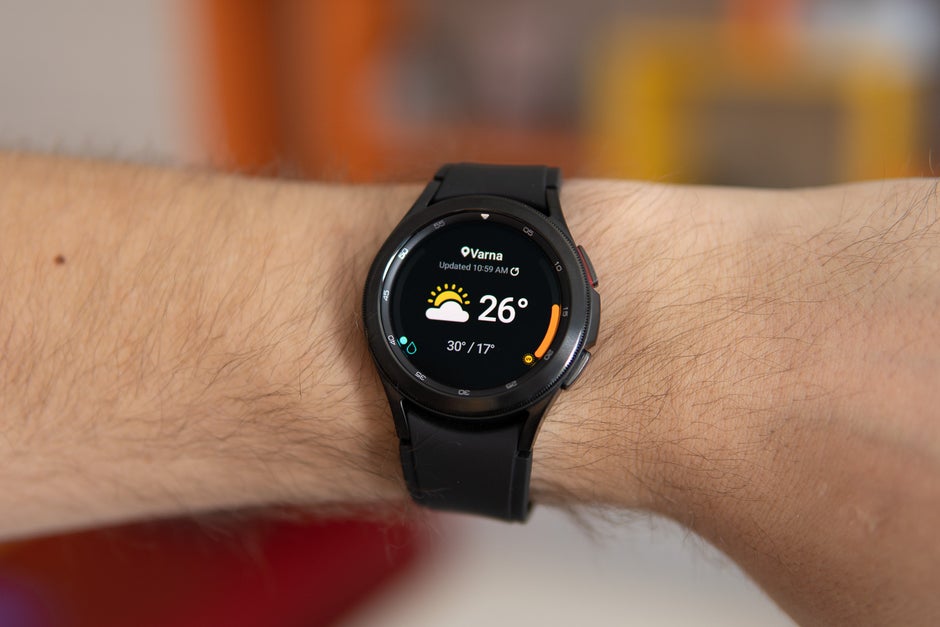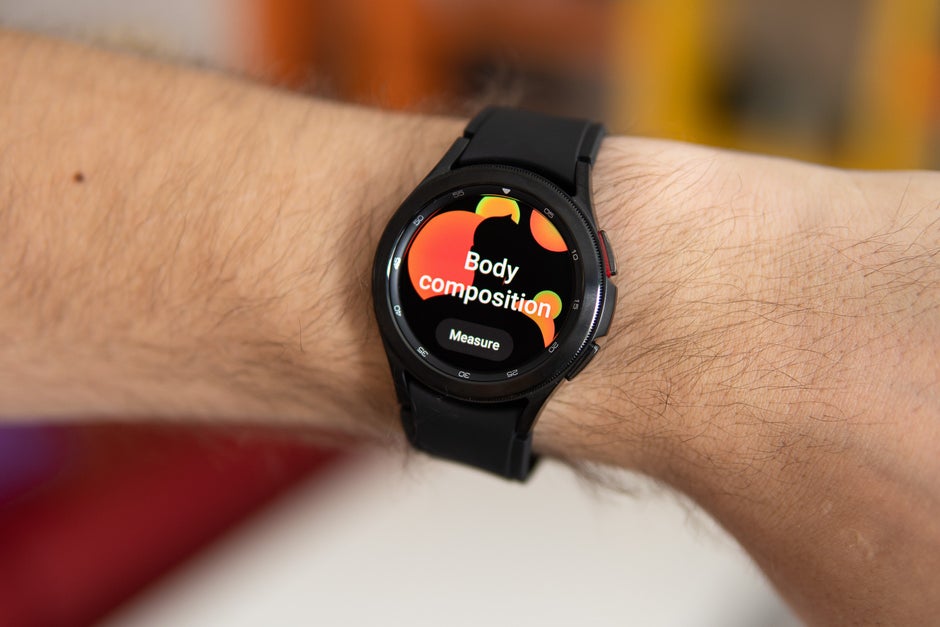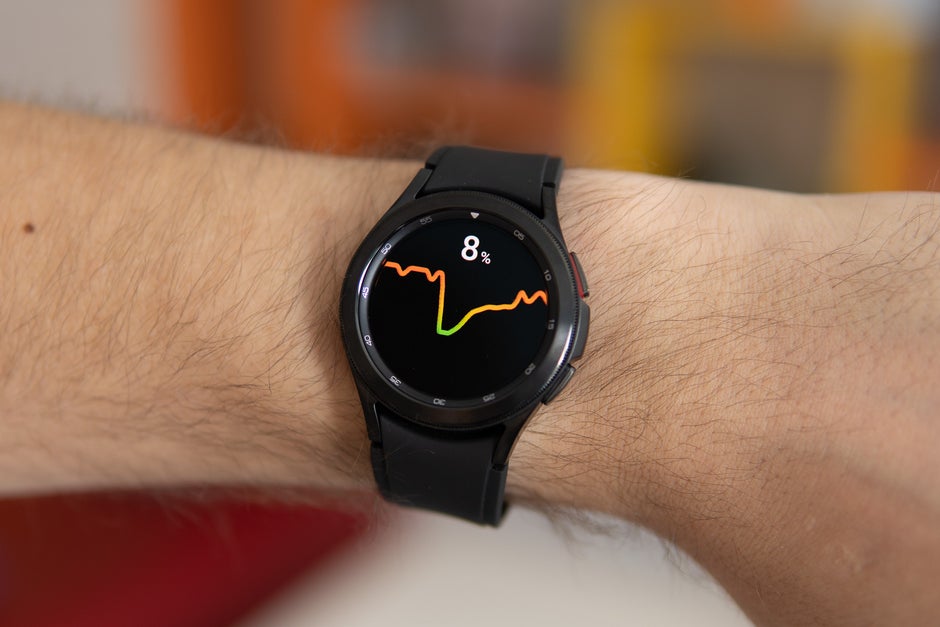Samsung Galaxy Watch 4 Classic review: Almost flawless
There’s IP68 water and dust resistance on deck, as well as MIL-STD-810G shock resistance, which inspire me with confidence that the Galaxy Watch 4 Classic will survive anything a regular user could throw at it in your everyday life. Surely, if you’re into trekking, hiking, or extreme sports, that’d be the wrong watch to wear.
What I don’t like from a design standpoint is the fluoroelastomer wrist band. Don’t get me wrong, it is high-class material that feels great to touch, but it induces so much skin perspiration that it’s a bit uncomfortable to wear on those hot summer days and I was forced to take it off on more than one occasion. It simply doesn’t let my skin breathe, which is a pity.
The display of the smartwatch is truly gorgeous. It can get very bright under the daylight sun and the overall colors look great, which has become typical of most Samsung displays over the years. I had some minor issues with the auto-brightness though: sometimes, it randomly dimmed the display below legible levels while I was out and about, while dimming the screen at bedtime often takes too long.
Galaxy Watch 4 Classic Software and Functionality
Just like an Apple Watch wouldn’t connect to an Android device, a Galaxy Watch 4 Classic wouldn’t pair with an iPhone. What’s more, to make use of its best features, you definitely want to be rocking a Samsung phone. For example, the Galaxy Health Monitor app, which is required to take your electrocardiogram and blood pressure, works on Galaxy smartphones only.
Overall, I think that the new OS and interface are a great match for the Galaxy Watch 4 Classic. It feels familiar yet definitely more capable thanks to the multitude of apps and watch faces available on the Play Store. Tizen on the previous wearables was definitely more constrained when it comes to apps.
Making calls on the Galaxy Watch 4 Classic is surprisingly a great experience. The on-board speaker is loud and clear, resulting in no issues with hearing the other party. At the same time, the microphone reportedly did a good job at relaying my voice. Have in mind that if you have the Bluetooth-only version of the watch, like I did, you will need your phone to be nearby to take and make calls.
Galaxy Watch 4 Classic Wellness, Fitness and Health
The Galaxy Watch 4 Classic has an impressive array of health features. Aside from the regular heartrate and blood oxygen monitoring, the wearable would also take your electrocardiogram (ECG for short) and blood pressure in supported regions. The latter isn’t supported in my region, though the ECG feature seemingly works well. There’s also a dedicated menstruation cycle feature that would track women’s cycles, which should come in handy to half the world’s populace.
As far as activity tracking, the Galaxy Watch 4 Classic does a pretty good job of automatically detecting what workout you’ve taken up. With running and swimming, the watch quickly detects and starts tracking the workout, and I can only assume the experience is as fluent as with the rest of the supported activities and sports.
Galaxy Watch 4 Classic Performance and Battery Life
After a somewhat stutter-y first day with the watch, which I’m willing to attribute to a rather large software update and the system settling in, the overall performance of the wearable has been mostly excellent. The 1.18GHz Exynos W920 Dual Core chip on board feels quite nippy though smartwatches aren’t about raw performance, but rather energy efficiency.
Now let’s tackle the oh-so-important topic of battery life, which is both great and simultaneously… isn’t. What does that mean?
Then again, every coin has two sides. Considering how many sensors and features have to draw power, not to mention the display, it’s pretty evident why the wearable would normally only last you for a day, a day and a half if you use it more sparingly. And you know what? Despite the non-impressive battery life, especially when compared with other smartwatches, I’m willing to give the wearable a pass and top it up every single day. If anything, such a battery life is to be expected of such a feature-rich wearable and is similar to the one of the Apple Watch. Surely, Huawei does a better job at battery management, but it should be noted its wearables aren’t as “smart”.
For all the latest Technology News Click Here
For the latest news and updates, follow us on Google News.



